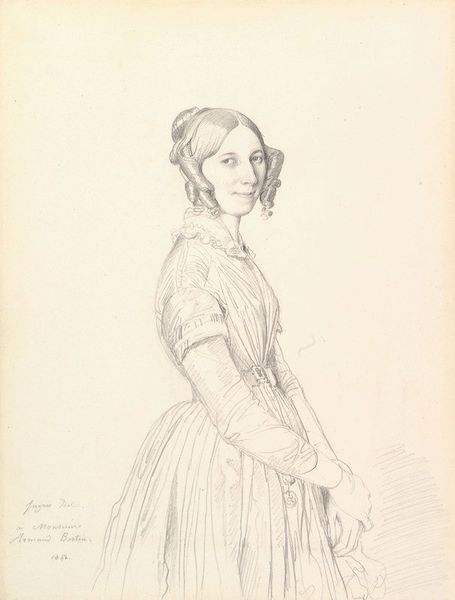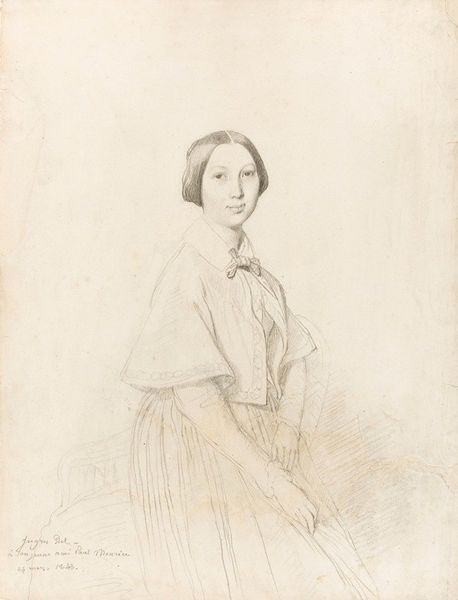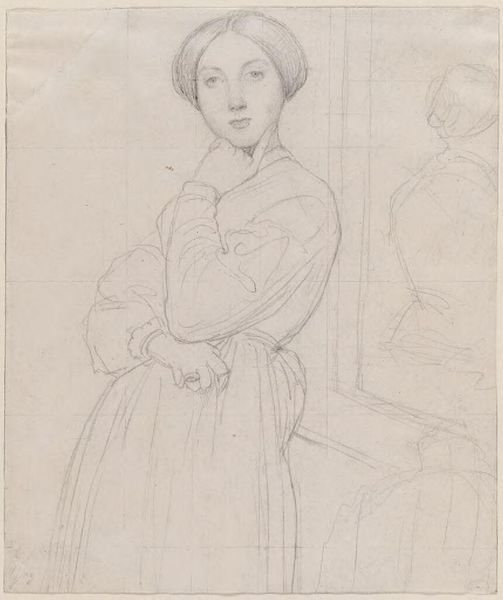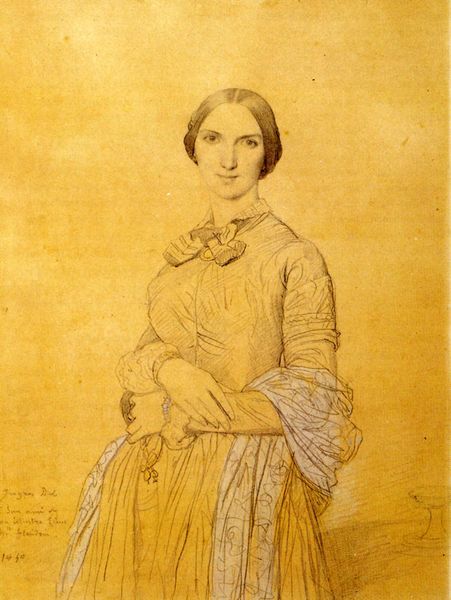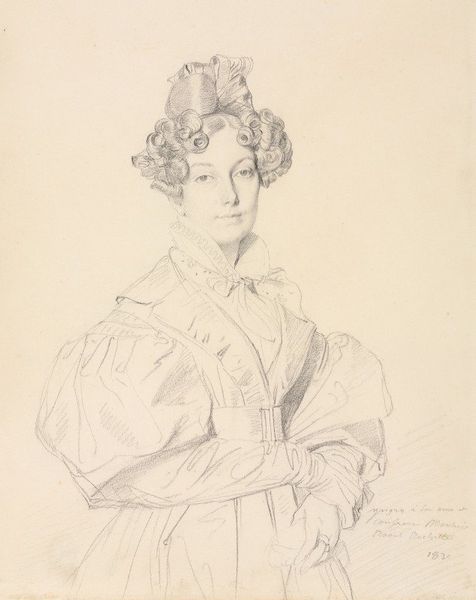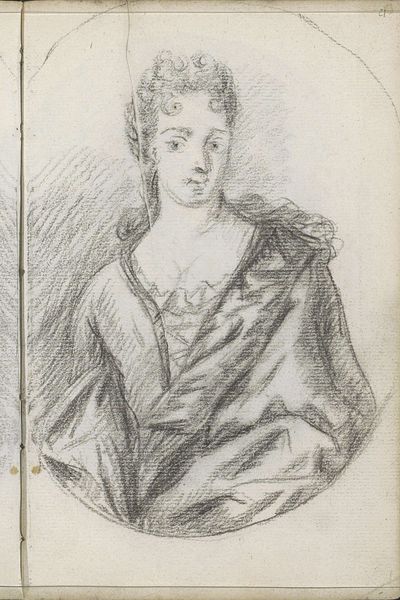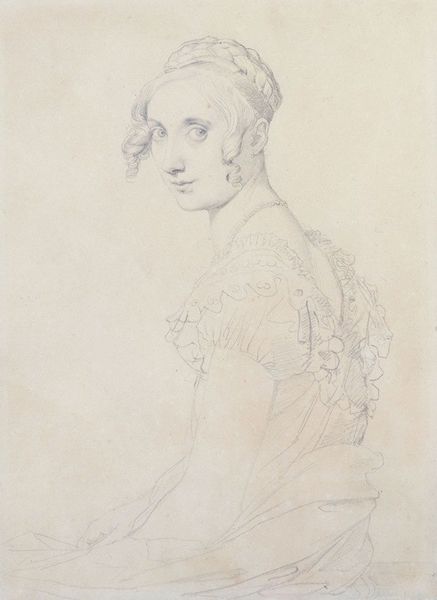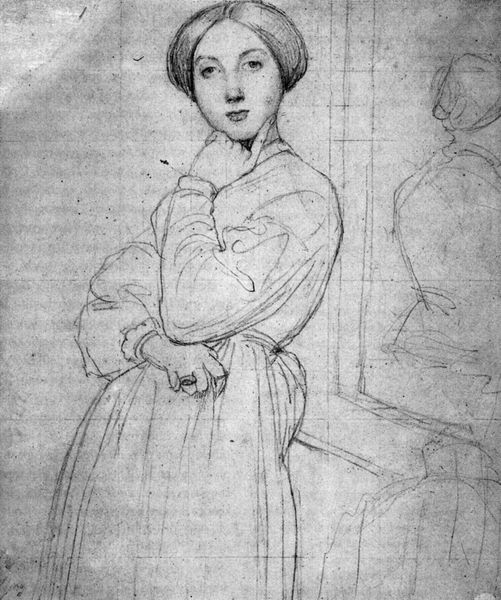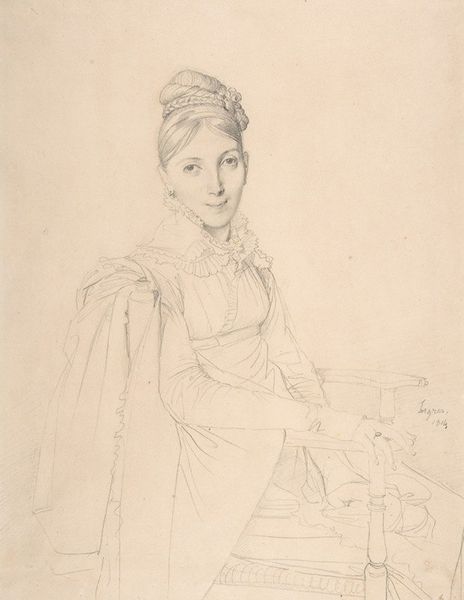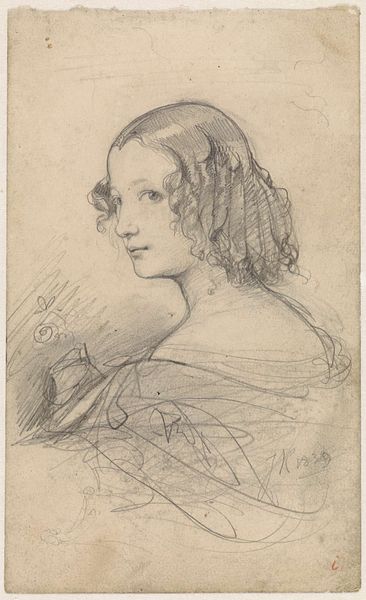
drawing, pencil
#
portrait
#
pencil drawn
#
drawing
#
neoclacissism
#
pencil sketch
#
figuration
#
pencil drawing
#
sketch
#
pencil
#
portrait drawing
#
academic-art
Copyright: Public domain
Curator: I am struck by the subtle yet assertive nature of this portrait. Editor: Absolutely, it feels almost ghostly, with soft pencil lines capturing the likeness of Mademoiselle Cecile Panckoucke, an enigmatic woman immortalized by Ingres, sometime during his career. The lack of sharp detail renders a dreamy effect that resonates deeply with me. Curator: For me, the medium, being a drawing, amplifies the feeling of impermanence. One sees her captured for a fleeting moment of eternity. Note the compositional decisions; Ingres only implies at her clothing, yet captures the folds and ribbons in exquisite detail which creates depth. Even in its unfinished state, there is so much story embedded in the subtle symbolism that carries forward to this day. Editor: Story, absolutely. Cecile occupies an interesting place within 19th-century bourgeois society. While this image maintains classical approaches, I can’t help but wonder about her individual freedoms as a young woman, carefully managed by the patriarchal system to maintain societal structure and dynastic relations. Her pose and garments read as highly coded expressions of controlled agency. Curator: The pose and presentation do evoke those considerations, for sure, but, considering the symbol of the hand placed to the chin, a conventional element from the era, might be reflective of not confinement, but reflection. The act of consideration, of quiet analysis, was viewed as a prized intellectual virtue. Is she not presented to us as possessing thoughtfulness? Editor: Fair, but that very “thoughtfulness” itself may be another form of curated performance. Regardless, Ingres’s mastery is undeniable. To evoke such emotional and societal complexity from a simple medium and sparse approach demonstrates not just artistry, but a keen social observer at work. Curator: It is so striking how the absence of color allows us to fixate upon the nuances of line, shading, and form that hold such meaning. It allows us, also, as contemporary viewers, to project aspects of our present awareness and desires. The iconography and social context interplay as powerful forces on our understanding. Editor: This brief encounter reminds me that our responses to images are always dialogues, shaped by what the art presents to us as much as what we bring to it, shaped by social expectations and assumptions that continue to evolve through time. It will be interesting to imagine what the next century may find in this image.
Comments
No comments
Be the first to comment and join the conversation on the ultimate creative platform.

